I recently attended an Us Girls three-hour training session called “How to Engage Women and Girls in Sport”. The course was packed with evidence-based tips, other information and rich discussions, and was well worth attending.
Here are just a few of the interesting points I picked up.
1. Try to see your club through the eyes of a beginner
According to data shared on this course, only 12% of girls in England aged 14 meet the official guidelines for physical activity – this is about half the number of boys at the same age. (Very interestingly though, the same data shows that 74% of girls want to be more active).
That’s a very high number of young women and girls who simply aren’t used to exercise, and may well feel nervous or alienated at the prospect.
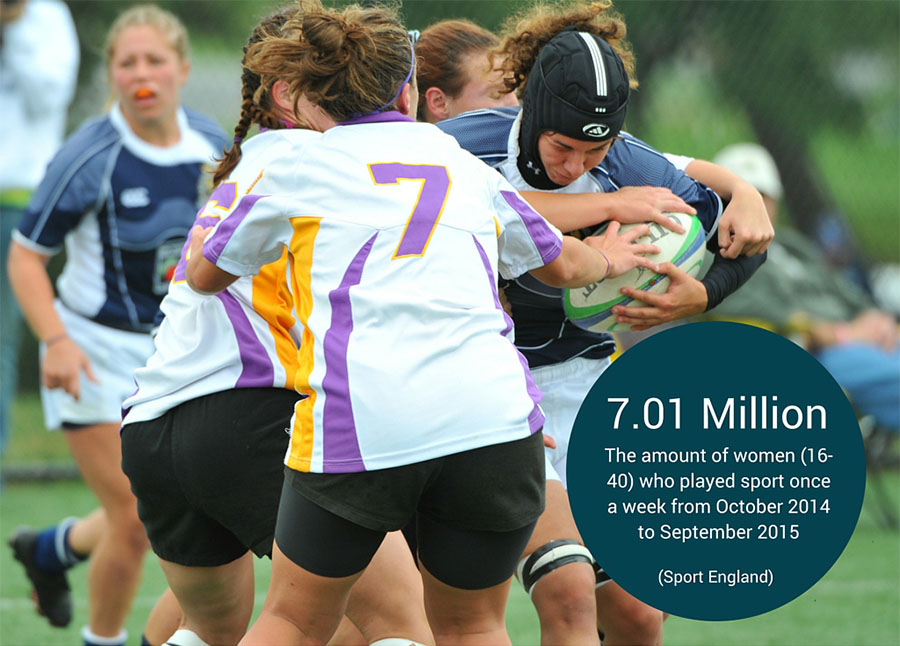
And as the trainer pointed out, all of us attending the workshop were there because we love and “get” sport. To us, all the little customs and routines of our own sport and/or club are perfectly reasonable and normal. But a young woman walking in for the first time may have all kinds of questions:
- Why do I have to do that?
- How should I behave?
- Why do I have to leave my personal belongings there when I don’t yet trust you?
So try to put your own confidence and experience to one side, and really think about all the things you do and say, which might seem strange to new people. You’ll then be in a better position to empathise, and help new students feel at ease.
The workshop tutor told us a great story about how he actually joined a choir (with no musical experience whatsoever!), just to see what it felt like to be uncomfortable and out of his depth. He said that this helped a lot to increase his understanding of how his own new students might feel.
2. Focus on the social side in your marketing
For younger women, taking part with friends and family members tends to be really important. Us Girls therefore recommends word of mouth, direct contact, social media, taster sessions and outreach work. They advise that just relying on posters and leaflets is unlikely to achieve much.
Girls and younger women are also highly influenced by the opinion of their peers. So if you can target one or more very influential “alpha female” and get them attending and enjoying your club, it’s very likely that more girls will flock to follow her. (This works for boys and young men too!)
If you have access to schools, this leader can often be the more “edgy” girl (or boy). As the workshop tutor put it: they’re often troublesome for their teachers, but for us they’re just the kind of student we want to reach!
3. Understand the barriers faced by women from different ethnic and cultural groups
Part of the workshop focused in on several specific groups who would be likely to need additional support to access sporting activities. The first such group was women and girls from black and minority ethnic communities, and diverse cultural groups.
We discussed approaches to support women whose culture requires them to train in female-only environments, with a female coach. You may also need to ensure that men can’t spectate. An easy way to achieve this can be to cover glass doors and windows, and put up signs. Some women will also appreciate being able to wear clothing of their choice such as long trousers, long sleeves and head coverings.
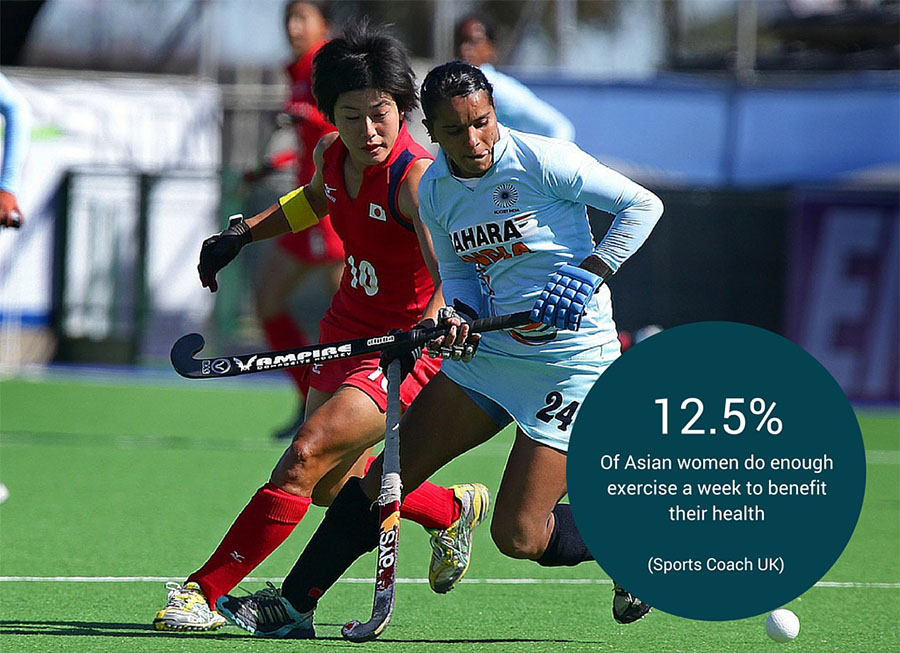
The workshop tutor talked about the importance of engaging with the women and girls’ families. This can be very useful, to get their “buy-in”, and reassure them that you respect their cultural beliefs.
He also advised that it’s helpful to be aware of faith calendars. Firstly, so that you can avoid important events clashing with a major festival (for example). Secondly because you may be able to link in with whatever the local community is doing to celebrate a key event, to promote your club.
On a related note, it can often be helpful to use a faith venue if you are looking to recruit women and girls from minority ethnic communities, to make it feel more familiar and comfortable for attendees.
4. Understand and address barriers faced by young mums
This group was highlighted on the course because young mums tend to be very busy and time-poor, so exercise is often pretty low down on their list of priorities. The advice here was all about making it easy and uncomplicated for them to join in your sport.
For example, it’s great if you can arrange the class so that young mums can just turn up without having to worry about any special clothes or equipment. Sessions held in the park can be very popular, due to the low cost, and the chance to spend some quality time with their baby in the fresh air.
Because (all!) mums can be so stretched fitting many things into their day, it can be really useful for them if you give lots of detail about the session, to help them plan.
And if you can help out with childcare in any way, it’ll be appreciated. If you don’t have the facilities to offer something like a crèche yourself, you could help by mobilising the mums to share childcare, or run activities where parents can train alongside their kids. This could be either in the same group, or in two separate groups.
5. Understand the needs of women in challenging circumstances
This group might include young women not in education, employment or training; those living on a low income; or women at risk of getting involved in crime. Typically this group lack confidence, live on a low income, and are not involved in sport.
The workshop tutor explained that it can be hard (and time-consuming) to engage this group and win their trust. He talked about getting into partnership working with agencies who already support them. You could even train up someone in that agency to deliver your sport, or to help out in your own sessions.
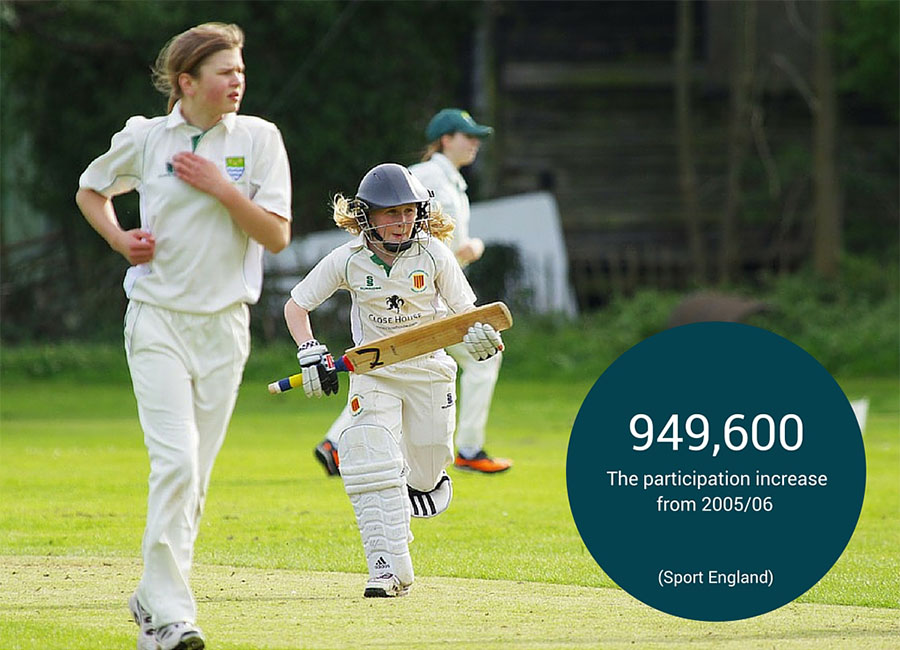
Us Girls also promotes a range of innovative good practice such as linking in non-sporting activities to your sessions, to make them more attractive to this group. This could either include activities such as beauty, cooking or art; or access to services such as social housing options or money management.
You’re more likely to succeed with this group if the whole class comprises young women in similar circumstances. Because inviting these young women into a class where they perceive the others as “better” than them will often put them right off.
Personal qualities are always important in a coach, but perhaps even more so for this group. It’s also helpful if you have a good understanding of the issues and barriers these women are facing – this may mean that you and/or colleagues need extra training or other learning opportunities.
6. Get your marketing right
Younger women especially are more attracted by bold, bright colours; and by photos than other images. They also respond better to images of other people having fun, rather than more “serious” or competitive sporting images.
Images that show what’s involved in the activity can also be very attractive to encourage young women to have a go.
Us Girls advises sports clubs to avoid coming over as too directive or “too much like school” in any way.
One of the best ways to get your messaging right is to ask the girls and young women themselves. You can run a number of ideas past them (images, wording, presentation) and take feedback on “what works” for them.
You can also explore other innovative ways to recruit students. Advertising for new students to join your own club is the obvious approach, and that’s absolutely fine. But this course suggested a number of other approaches too.
For example, you could reach out to existing local groups, and offer to run a one-off session or regular activity programme for their members. Or you could run a specific session for participants from several local groups.
7. Get your venue right
A lot of women and girls have bad memories of school PE, or just general insecurities around sport and exercise, and don’t see themselves as necessarily welcome in the world of sport.
A good leisure centre can be a fantastic venue, with its smart and attractive facilities. However, it can also be intimidating to some women if they see themselves as “not the sporty type”. Training here can also work out expensive; and can be unattractive if it’s hard to get to, or some distance away from where participants live. So often, a convenient, local venue which women are already used to can be perfect, such as the local college, or a children’s centre.
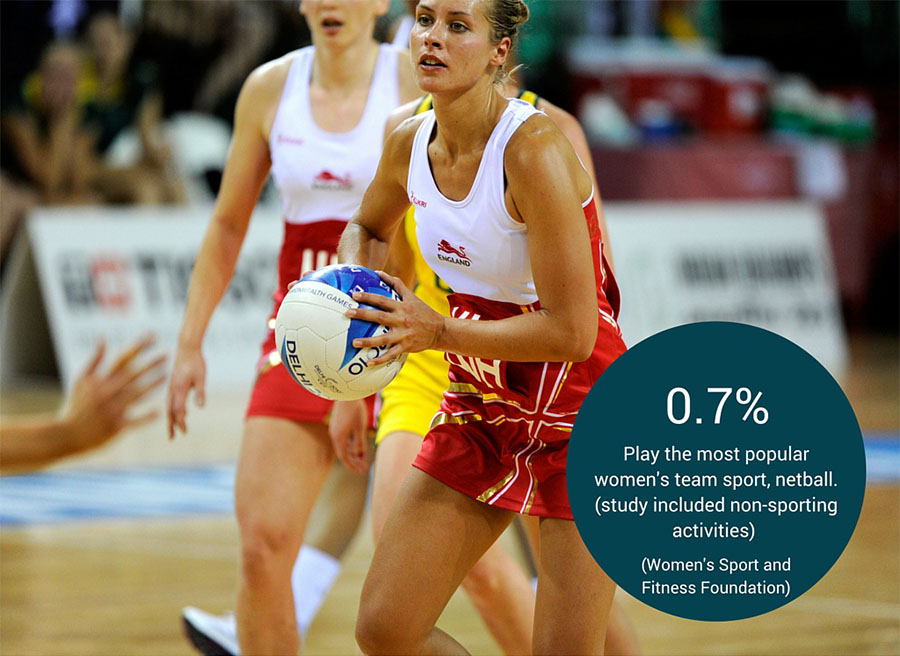
Wherever you train, women tend to place a higher importance than men on training in a clean, attractive venue.
And safety and accessibility are really important. This includes arriving at, and leaving the building at the end of the session. For example, walking out to the parking area in the dark may feel unsafe for some women. You can help by ensuring good lighting, or making sure that no one has to walk out there alone if they don’t want to.
8. Support girls and young women to develop a positive body image
One of the reasons girls and young women are less likely to exercise is because so many of them feel self-conscious and critical about their bodies. But in fact, engaging in sports can be a great way to overcome these insecurities.
When an exercise class puts the emphasis on improving appearance (such as a focus on burning calories), this can actually make women feel more self-conscious and insecure about their bodies. A much more effective way to improve body image through exercise is to focus on what the body can do, rather than how it looks.
On a related note, you should try to discourage women from exercising for appearance-related reasons. Because this is very likely to lead to frustration, disappointment and ultimately drop-out.
You can also support women and girls’ self-esteem by using realistic images in your marketing. Images that show women exercising with perfect make-up and not a drop of sweat only exacerbate the fear that sweating is “unfeminine” and “unattractive”. Images of women with “perfect” bodies can make girls and young women feel intimidated, and that they don’t belong in your club.
One of the best ways to increase women’s body confidence is to increase their feelings of self-efficacy. This means feeling competent and in control of your body. You can help with this by setting small, achievable goals, which may include attendance goals.
9. You don’t have to be a woman to coach girls and young women effectively
The most important thing about a coach for girls and young women is their ability to coach well, lead and inspire. This is regardless of whether they are male or female. Qualities of successful coaches for girls and young women tend to include: Inspiring and encouraging; Down to earth and “real”; Open and helpful; Ability to listen and be responsive; and committed.
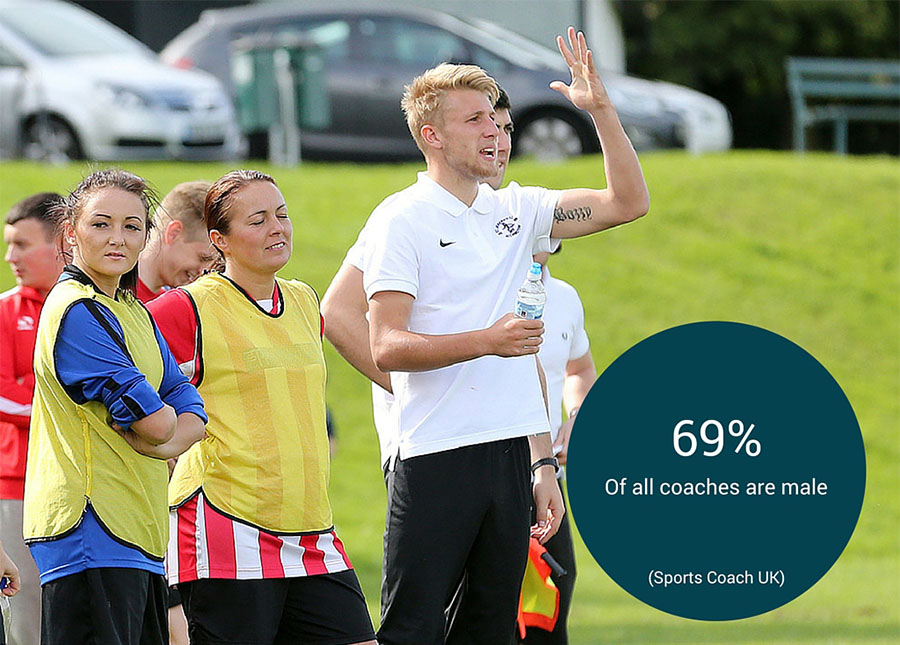
The workshop tutor was male, and said that he worked alongside a female assistant coach, who in his view was a definite extra draw for the girls. But he also said he didn’t feel this would be essential, if it wasn’t possible.
One exception to saying that gender is not a big factor, is of course the case of coaching girls and young women from cultural groups which prefer girls to be taught by women.
10. Be creative and have fun!
What I really loved about this course, and the pack of written resources that all participants received, was the colour, vibrancy and huge range of potential it all seemed to open up. The trainer had brought along a display of “good” posters and leaflets, to give us examples of “what works”.
The Us Girls website has a load of brilliant case studies, ideas and resources, including a 170-page Us Girls Simple guide to marketing your project. It’s a detailed guide on how to target the market segment which Sports England labels as “Leanne”.
So if you’re unsure how to engage girls and young women in your sport, don’t hold back. The resources are out there, and more importantly the need for your activity is urgent and strong.
For more of Kai's coaching tips and tricks, head to her previous article on coaching disabled participants in sport.
Kai Morgan is a martial arts blogger with a special focus on women’s participation in and experience of the martial arts. Check out her blog and download her free e-book on how to attract and retain more female students in your dojo.
